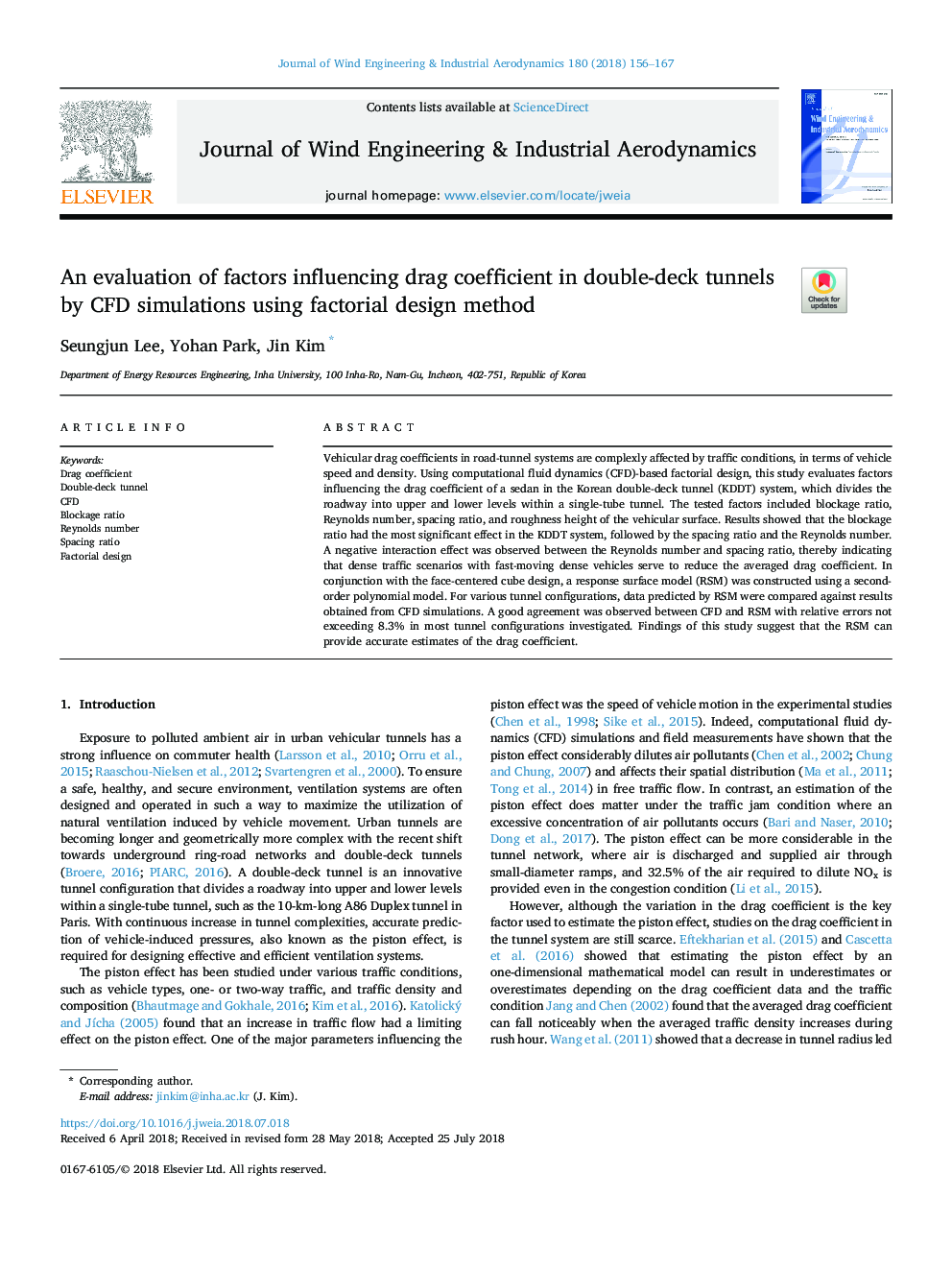| Article ID | Journal | Published Year | Pages | File Type |
|---|---|---|---|---|
| 6756794 | Journal of Wind Engineering and Industrial Aerodynamics | 2018 | 12 Pages |
Abstract
Vehicular drag coefficients in road-tunnel systems are complexly affected by traffic conditions, in terms of vehicle speed and density. Using computational fluid dynamics (CFD)-based factorial design, this study evaluates factors influencing the drag coefficient of a sedan in the Korean double-deck tunnel (KDDT) system, which divides the roadway into upper and lower levels within a single-tube tunnel. The tested factors included blockage ratio, Reynolds number, spacing ratio, and roughness height of the vehicular surface. Results showed that the blockage ratio had the most significant effect in the KDDT system, followed by the spacing ratio and the Reynolds number. A negative interaction effect was observed between the Reynolds number and spacing ratio, thereby indicating that dense traffic scenarios with fast-moving dense vehicles serve to reduce the averaged drag coefficient. In conjunction with the face-centered cube design, a response surface model (RSM) was constructed using a second-order polynomial model. For various tunnel configurations, data predicted by RSM were compared against results obtained from CFD simulations. A good agreement was observed between CFD and RSM with relative errors not exceeding 8.3% in most tunnel configurations investigated. Findings of this study suggest that the RSM can provide accurate estimates of the drag coefficient.
Related Topics
Physical Sciences and Engineering
Energy
Renewable Energy, Sustainability and the Environment
Authors
Seungjun Lee, Yohan Park, Jin Kim,
